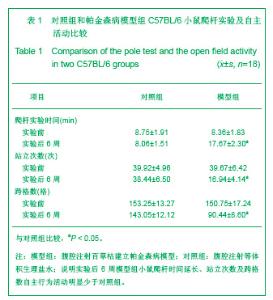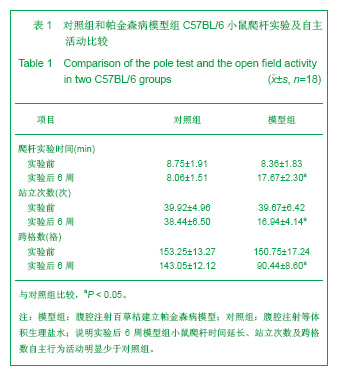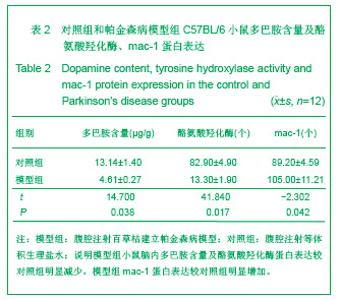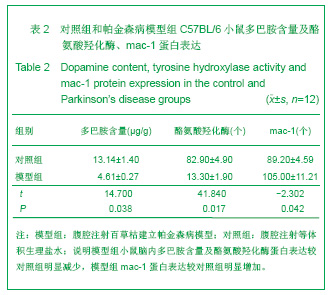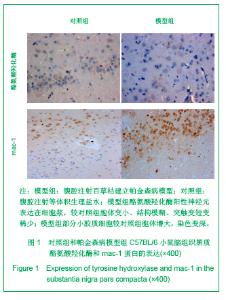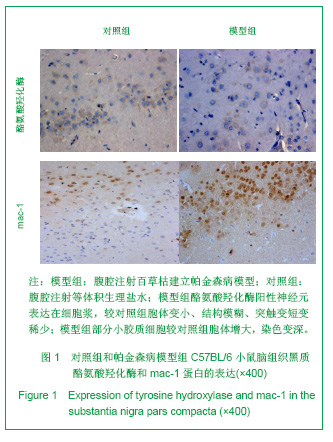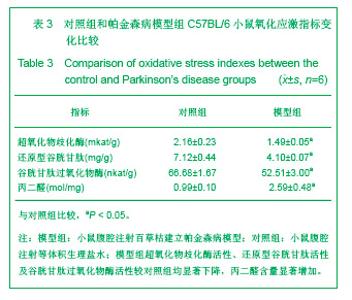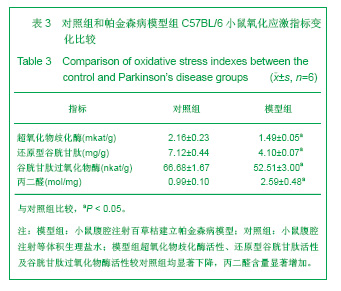| [1] Katzenschlager R, Head J,Schraq A,et al.Fourteen-year final report of the randomized PDRG-UK trial comparing three initial treatments in PD. Neurology. 2008;71:474-480.[2] Mihara T,Mihara K,Yarimizu J,et al. Parmacological characterization of a novel, patent adenosine A1 and A2A receptor dual antagonist, 5-[5-amino-3-(4-fluorophenyl)pyrazin-2-yl]-1-isopropyridine-2(1H)-one(ASP5854),in models of Parkinson’s disease and cognition.J pharmacol Exp Ther. 2007;323(2):708-719.[3] Chen P,Kales HC,Weintraub D,et al. Depression in veterans with Parkinson’s disease:frequency, comorbidity,and healthcare utilization.Int JGeriatr Psychiatry.2007;22 (6): 543-548.[4] Uehara T, Nakamura T, Yao D, et al. S-nitrosylated protein-disulphide isomerase links protein misfolding to neurodegeneration. Nature.2006 ;441(7092) :513-517[5] Liu B,Gao HM, Hong JS.Parkinson’s Disease and Exposure to infections Agents and pesticides and the Occurrence of Brain injuries:Role of Neuroin Ammation.Environ Health perspect (S0091-6765).2003;111:1065-1073.[6] Sekiyama K, Sugama S, Fujita M,et al. Neuroinflammation in Parkinson's Disease and Related Disorders: A Lesson from Genetically Manipulated Mouse Models of α-Synucleinopathies. 2012; 2012: 271732.[7] McGeer PL, McGeer EG. Glial reactions in Parkinson’s disease. Mov Disord. 2008;23(4):474-483.[8] Gao HM, Jiang J, Wilson B, et al. Microglial Activation-mediated Delayed and Progressive Degeneration of Rat Nigral Dopaminergic Neurons:Relevance to Parkinson’s Disease.J Neurochem(S0022-3042).2002; 81(6):1285-1297.[9] Greenamyre JT,MackebziE GM,Peng TI,et al.Mitochondrial Dsyfunction in Parkinson’s Disease.Biochem soc symp (S0067-8694).1999;66:85-97.[10] Kawai H,Makino Y,Hirobe M, et al.Novel ndogenous 1,2,3,4-tetrahydroisoquinoline derivatives:uptake by dopamine transporter and activity to induce parkinsonism. J Neurochem.1998;70:745-751.[11] Dauer W,Przedborski S.Parkinson’s Disease:Mechanisms and Models.Neuron.2003;(6):889-909.[12] Chen SD. Beijing:Renmin Junyi Chubanshe. 2002:238-239. 陈生弟.帕金森病临床新技术[M].北京:人民军医出版社,2002:238-239.[13] Kim B, Yang MS, Choi D,et al.Impaired Inflammatory Responses in Murine Lrrk2-Knockdown Brain Microglia. PLoS One. 2012; 7(4): e34693. [14] Block ML, Hong JS. Chronic microglial activation and progressive dopaminergic neurotoxicity. Biochem Soc Trans. 2007;35 ( Pt5):1127-1132.[15] Kim YS,Joh TH.Microglia, major player in the brain inflammation: their roles in the pathogenesis of Parkinson’s disease.Experimental and Molecular Medicine.2006;38(4): 333-347.[16] Lee EJ, Woo MS, Moon PG,et al.α-Synuclein Activates Microglia by Inducing the Expressions of Matrix Metalloproteinases and the Subsequent Activation of Protease-Activated Receptor-1. J Immunol. 2010;185(1): 615-223.[17] Kim WG,Mohney RP,Wilson B,et al.Regional difference in susceptibility to lipopolysaccharide-induced neurotoxicity in the rat brain:role of microglial J Neurosci.2000;20:6309-6316.[18] Huh SH, Chung YC, Piao Y,et al.Ethyl pyruvate rescues nigrostriatal dopaminergic neurons by regulating glial activation in a mouse model of Parkinson's disease. J Immunol. 2011;187(2):960-969.[19] Kreutzverg GW. Microglia: a sensor for pathological events in the CNS.Trends Neurosci.1996;19:312-318.[20] Kumar H, Lim HW, More SV,et al.The Role of Free Radicals in the Aging Brain and Parkinson’s Disease: Convergence and Parallelism. Inter J Molecular Sci. 2012;13, 10478-10504.[21] Xu JP,Li YL,Lin XY,et al.Zhongfeng yu Shenjing Jibing Zazhi. 2000;17(1):46-48.许继平,李玉莲,蔺新英,等.帕金森病患者血液抗氧化功能的变化及多巴制剂与VitE对其影响的研究[J].中风与神经疾病杂志, 2000, 17(1):46-48.[22] Ren JP,Sun XJ,Jiang YP.Shanghai Jiaotong Daxue Xuebao: Yixueban. 2007;27 (1):76-78.任今鹏,孙晓江,蒋雨平.百草枯对小鼠黑质多巴胺能神经元氧化应激的影响[J].上海交通大学学报:医学版, 2007, 27 (1):76-78.[23] David R Beers,Weihua Zhao,Bing Liao,et al. Neuroinflammation modulates distinct regional and temporal clinical responses in ALS mice Brain Behav Immun. 2011; 25(5): 1025–1035. [24] Raivich G.Like cops on the beat:the active role of resting microglia. TrendsNeurosci.2005;19:312-318. |
